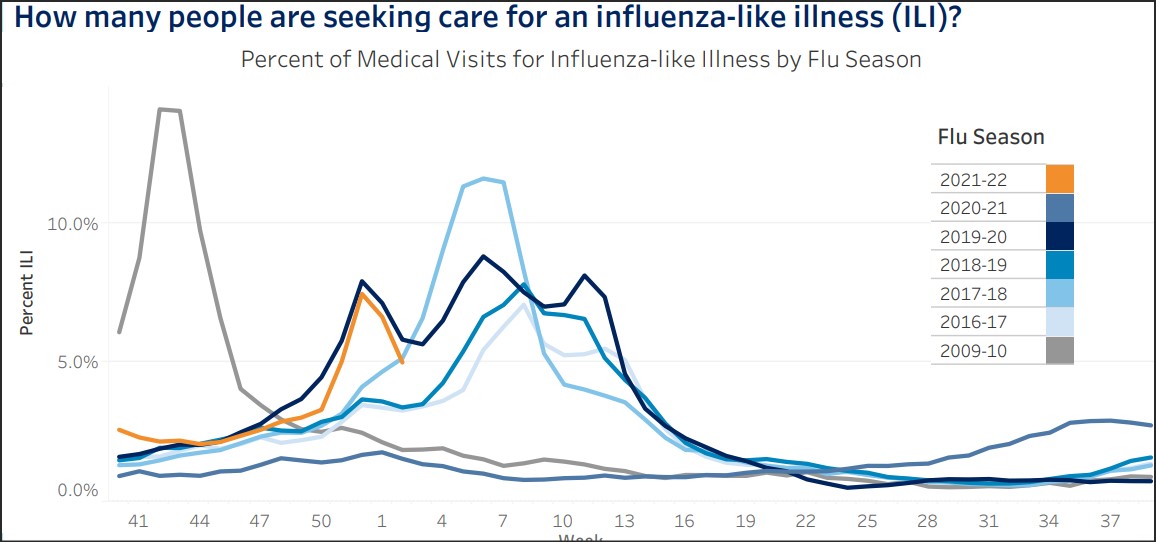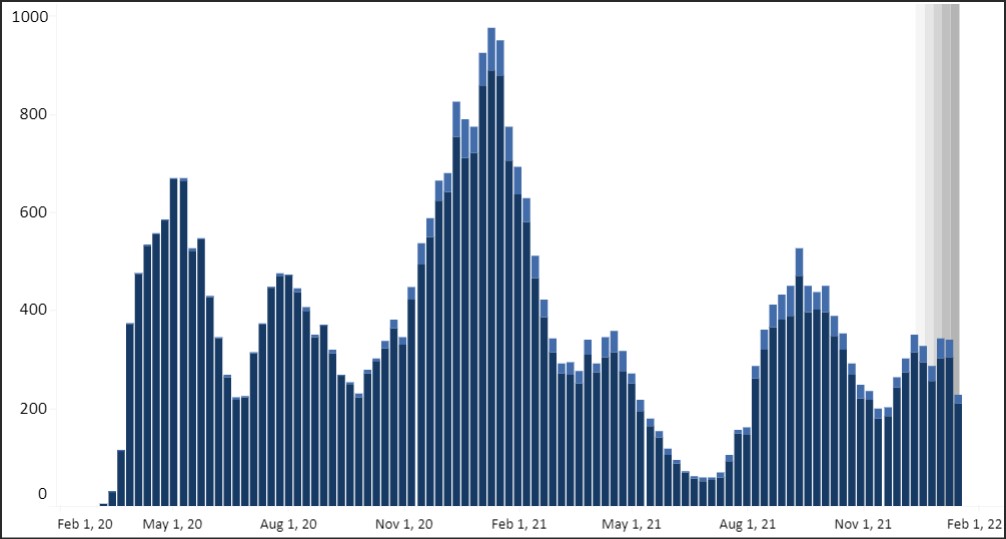
by James A. Bacon
I have seen considerable discussion on the internet recently about the relationship between COVID-19 and influenza. One thing that seems to be widely accepted is that influenza receded — indeed it practically disappeared — as COVID-19 surged. Where the disagreement occurs is over why influenza faded and now seems to be making a comeback.
The conventional wisdom is that the masking and social-distancing measures enacted to slow the transmission of COVID-19 also acted to slow the spread of influenza. That makes intuitive sense given that the measures were designed to fight influenza epidemics in the first place and were dusted off out of desperation to “do something” about COVID-19. If the conventional wisdom is correct, we would expect to see the relaxation of masking mandates under the Youngkin administration lead to an increase in reports of Influenza Like Illnesses (ILIs) compared to the normal seasonal pattern.
An alternative theory making the rounds is that the COVID-19 and influenza viruses compete with one another. COVID-19 triggers temporary immunological responses that suppress the flu. As COVID-19 advances, the flu retreats; as COVID recedes, the flu advances.
Both theories seem plausible to me, and I don’t have the epidemiological chops to support one over the other. But I have been inspired to ask, hey, what’s the story here in Virginia? According to Theory #1 above, Virginia is kinda, sorta social distancing right now, but Youngkin’s reversal of mask mandates in schools should boost the incidence of influenza compared to last year when masking/social isolation was more rigorously practiced. Likewise, there should be a divergence between school districts that drop the masks compared to districts that contest Youngkin’s ban on mask mandates.
According to Theory #2, Virginia is experiencing a spike in COVID-19, which means that the population is building up massive natural immunities that not only confer resistance to COVID-19 in the future but should protect people from the flu for a time.
Here’s the chart for COVID-19 “hospitalizations,” a much more reliable indicator of trends than “confirmed cases,” which are heavily influenced by the availability and frequency of tests as much as by the actual prevalence of the disease.

COVID hospitalizations are up in January, as seen in the graph immediately above, but after rising in December, reported ILIs are down in January, as seen in the graph atop this post. That pattern seems more consistent with Theory #2 than Theory #1. But I’m hesitant to draw broad conclusions based on three weeks of data.
Perhaps we can make these predictions: if Theory #1 is correct and masking/social isolation is a driving factor in the incidence of the flu, then we should expect Youngkin’s rollback of mask mandates to contribute to at least a modest increase in ILIs through the flu season. If Theory #2 is correct and the Omicron surge contributes widespread temporary resistance to the flu, we should see a reduction in ILIs.
I’ll try to remember to follow up in a month and see which way things shake out.

Leave a Reply
You must be logged in to post a comment.